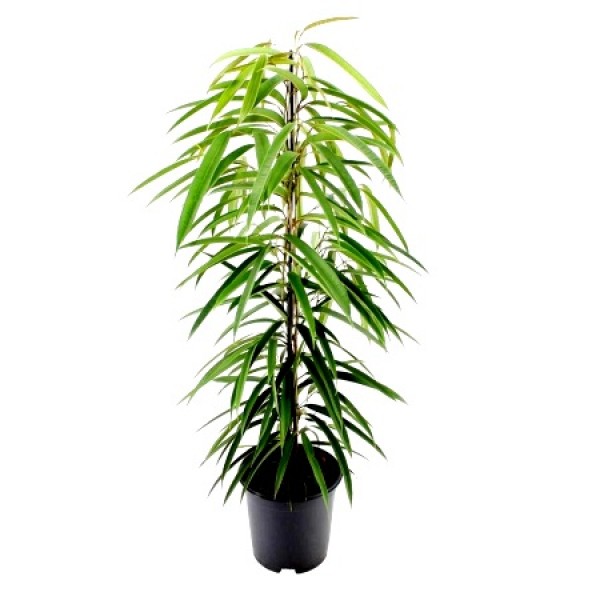This image is for reference purpose only, Photo May Slightly Different From Actual Item in Terms of Color Due to the Lighting During Photo Shooting or the Monitor's Display.
Ficus Plants
Ficus trees can maintain their tree-like shape regardless of their size, so this makes them ideal for bonsais or for massive houseplants in large spaces. Their leaves can be either dark green or variegated. In recent years, some imaginative nurseries have started to take advantage of their pliable trunks to braid or twist the plants into different forms.
Light: They need a bright room, even with a little direct sun in the morning. In their native habitat, they are often grown in semi-shady conditions, but indoors they need good light to thrive.
Water: Keep steadily moist, but don't allow it to sit in water or it will drop leaves and suffer from root rot.
Soil: Any good, fast-draining potting soil will likely do.
Fertilizer: These are heavy feeders and need plenty of fertilizer throughout the growing season.
Propagation
Ficus benjamina can be relatively easy rooted from cuttings, even without rooting hormone. It's best to take a cutting in the spring, when you can more easily supply warmth and moisture. Ficus is rarely grown from seed and most indoor plants will never fruit or yield seed.
Repotting
A healthy ficus is a fast-growing plant and will need careful attention paid to its potting. First off, if you notice your plant is growing more slowly, it's probably because of low water or low temperatures. The repotting requirements also depend on how you're growing the plant: ficus are incredibly flexible. They can be grown as standards, topiary, braided standards, regular houseplants, and even bonsai. Take your cues from the plant and repot annually in many circumstances.
Grower's Tips
Ficus benjamina are wonderful and incredibly rewarding plants to grow indoors. They make beautiful corner plants and large indoor "trees" for entryways and foyers. Although it is a little more challenging, it is possible to overwinter F. benjamina in temperate areas without massive leaf-dropping, but it will require careful attention to watering and temperature. In general, make sure to aggressively fertilizer your ficus plant, especially during the growing season. They have a fairly high need for fertilizer. Also make sure to prune away dead branches and pick dead leaves to prevent the spread of diseases or fungal infections that can severely affect your plant. If your plant is dropping leaves despite all these steps, and you're giving it nice bright light, try supplementing with a little magnesium and manganese. Ficus benjamina are vulnerable to pests including aphids, mealy bugs, scale, and white fly. If possible, identify the infestation as early as possible and treat with the least toxic option.
The Ficus benjamina is one of the most popular houseplants in the world. Known as the weeping fig, the F. benjamina is native to India and Southeast Asia, where its an important fruit and landscape plant. One of the common complaints about F. benjamina is its tendency to shed leaves easily: you move it, it drops leaves; the watering schedule changes, it drops leaves. It might help to know that part of this is because of the way these plants have evolved. F. benjamina are native to the subtropics and tropics where there is a distinct wet and dry season. In their native environment, plants typically drop leaves at the beginning of the dry season, making them exquisitely sensitive to changes in moisture. In terms of indoor culture, they are not especially demanding, but dislike being moved and, as mentioned before, they are highly sensitive to changes in watering.
Ficus Amston Long Plant - Ficus Benjamina, Weeping Fig
- Live plant along with plastic pot
- plants height with pot is 1.5 feet and pot size is 5 icnhes diameter.
- plants nature is outdoor-semi shade, alternate day watering
- useful for topiary garden, gifts Plants, Table top Plants & ground covers
- Best foliage plants & beautiful color texture on leaves
